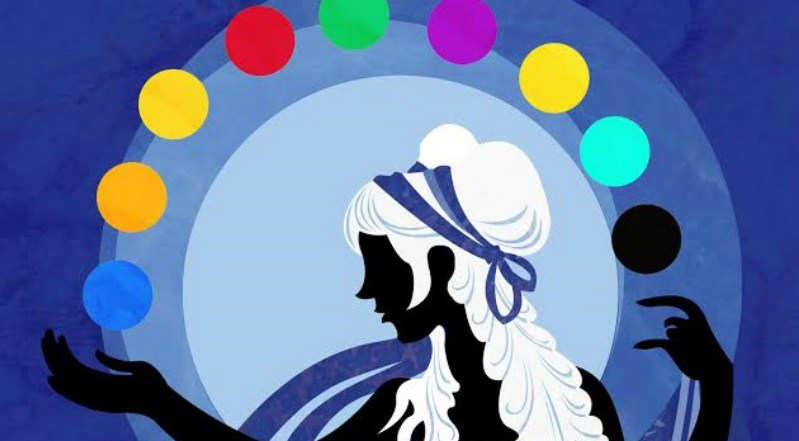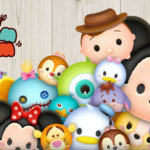
 “Fighting evil by ________,
“Fighting evil by ________,
Winning love by ________,
Never running from a real fight,
She is the one named Sailor Moon!”
For anyone who is a fan or grew up in the 90’s, you know the missing words to the opening intro to Sailor Moon. The impact that the original show had on people can still be felt to this day and looking at the impact on people is exactly what Bonnie Walling and Steven Savage wanted to capture in their book Her Eternal Moonlight. Already published on Rogues Portal is a First Looks segment by writer/editor Amelia Wellman. Here, I had the chance to interview Walling and Savage and get a bit more information about the book and what motivated them to produce Her Eternal Moonlight.
Rogues Portal (RP): Of all the different anime’s you could have chosen, why Sailor Moon?
Bonnie Walling (BW): Because of the length, depth and breadth of its impact. Back in the late ’90s, early ’00s, there were a lot of popular shows on Toonami and being circulated on VHS fansubs – but none of them seemed to have had staying power over multiple generations of fandom. You might see someone occasionally waxing nostalgic over Gundam Wing or Ronin Warriors, but you don’t see people curating art shows around those anime, or shirts with their characters still popping up on TeeFury, or their merchandise still being sold at anime cons (except in the nostalgia-themed booths). Sailor Moon is as loved and as timeless today as it was when it first started airing.
We also chose Sailor Moon because of its impact, specifically, on women. Sailor Moon was, for a LOT of girls and women, their first ever gateway to Japanese pop culture – indeed, their first cultural glimpse outside the usual gated girls-only TV community of pretty princesses and cute ponies. It shaped these viewers’ lives on a LOT of levels – social, personal, even professional.
Steven Savage (SS): Because wasn’t actually appreciated enough. Sailor Moon was and is hugely influential, but it seems its importance and influence isn’t really studied; it’s the wallpaper of anime fandom, it’s the shape of the room, but its not something we often think about. It has had incredible staying power.
Secondly, its influence on women was enormous – and that too is often ignored. It’s assumed but not studied in-depth.
RP: What inspired you to do this book now, as opposed to earlier or later on?
BW: The recent revival of the series in the form of Sailor Moon Crystal is really what sparked it. The flurry of interest in the revival got us thinking about the impact that the series had over the years – my co-author and I were at Fanime, a con in the Bay Area, and we were seeing cosplayers all around us. We started wondering if anyone had done a cultural study of the fandom, and were shocked to find out that nobody had. Which led to the inevitable question, why didn’t we do it ourselves? (Neither of us is quite sure who actually came up with the book idea, by the way).
SS: Would you believe a late-night conversation at Fanime?
Bonnie and I had seen a huge gathering of Sailor Moon cosplayers and that stuck in our minds, as did the omnipresence of Sailor Moon. We’re two Elder Geeks, and when you see people one, two, or even three decades younger than you enthused about a show? That says something. When we did a little digging we didn’t find an analysis of the show’s psychological impact, nor a study of it’s obvious impact on women.
We did find some great books – “Warriors of Legend” and “Sailor Moon Reflections” which were very helpful in our research.
RP: What surprised you the most when hearing the stories from women as you did the interviews?
BW: How similar the fans’ experiences were. We were expecting to hear a lot of very diverse answers and very different stories. We were kind of startled as we went on to see so many things coming up over and over again, and how many patterns and commonalities were emerging. In the end, we ended up using those commonalities as the themes of the various chapters. (In a very happy coincidence, we had just enough common themes so we had one chapter for each of the primary Senshi!)
SS: Two things. The similar experiences. We found roughly nine categories of “Sailor Moon” experiences our interviewees had. They were extremely consistent and every person fell into several of the categories. In fact because of the consistency the book was about 30 pages shorter than I’d expected – different people kept relating similar experiences! The depth of experiences was the second thing. This show changed lives, it saved lives, it guided careers. Imagine what it’s like talking to someone who wouldn’t have had their job and/or a happy life without this show.
RP: What did Sailor moon mean to you both when growing up?
BW: I actually did not discover the series until I was an adult – I grew up in an earlier era of cartoons, which were largely produced with a male audience as the default. (At least there were strong female characters on shows like Scooby Doo and Josie and the Pussycats!) When I found it, it was the kind of thing I had WISHED I’d had as a child. There were strong female role models everywhere – and no matter what kind of girl you were, you could see a mirror of yourself. Plus, it was a fairy tale where the princess repeatedly had to rescue the prince – how anti-Disney is that?
SS: The funny thing for me is I’ve always been “Sailor Moon adjacent.” I’ve appreciated the show and the manga and the musicals, but the big fans were always my friends and acquaintances. The thing is this has let me see it’s growth over the decades and see its influence, so I always respected it – and I think that gave me the perspective I needed to do my part in the book.
RP: Which Sailor scout do you identify with most?
BW: I would say Usagi. One of the biggest themes we found among our participants was they related to her because she was presented as imperfect – and yet, she still managed to save the world. I can relate to that, considering I was a clumsy child. Usagi’s message is you could start out a klutz who was lacking in social graces, and still find it within your heart to do great things. That is an incredibly empowering message no matter if it’s delivered in the ’90s on an old tube-based TV or today through a Crunchyroll app.
SS: Actually I identify with Luna and Artemis. My job is Project and Program Management so I’m used to feeling like I’m herding cats . . . er or being a cat herding teenagers.
RP: Sailor moon definitely paved the way for other female heroes. Do you think Sailor moon is still relevant today or still has a place in today’s society?
BW: It most definitely is still relevant today. Its themes – friendship, individuality, female power – are timeless. In fact, in light of the recent Women’s March, they may be more relevant than ever. The show says that femininity is good, it’s strong, it’s valid – no matter what the world tries to say to you. It probably says something that many of the original fans now have children of their own, and when they show Sailor Moon to their kids, the children react just as strongly as they did.
SS: Yes, for two reasons. First, Sailor Moon represents ideas thought of as traditionally femminnine as powerful. There’s still a trend to make “strong women” fit masculine stereotypes. Sailor Moon tosses that idea the hell out the window and gives you school uniforms turned into superhero costumes, sparkly attacks, girls who act like girls, and more. Sailor Moon does not give a damn about what your idea of “strong” is.
Second, Sailor Moon is about female power period. That’s a relevant story not just now but in the past of all humanity, and as women work towards equal treatment. Sailor Moon is a kind of icon of not “female but powerful” but “female AND powerful”
RP: What is the reaction or feeling you want readers to have with this book?
BW: I want people to look at their own fandom experiences and think how they were affected in their earlier years. Ask themselves how their lives and opinions were shaped by shared experiences with other people that centered around something that most of the world might think is trivial – a TV show. Of course, I’d like people to have nostalgic fun with it as well – saying “remember when” is always a positive thing!
Ultimately, I would love it if readers did the same thing we did – if this book inspired them to go back to their own fandoms and start asking questions about other fans’ experiences. Having all these life-changing insights coming into the light at once could be very interesting!
SS:
First, I want them to appreciate and understand the huge impact of Sailor Moon.
Secondly, I want them to appreciate the power of fandom and how it can change lives.
Third, if they’re a Sailor Moon fan, I want them to appreciate what magic they have in their lives – and know they’re not alone.
Fourth, I want them to *write their own book about fandom.* There’s so much to document. Write us, we’ll help!
RP: Do you think the show coming out around the same time as the internet helped the show and community grow to what it is today, or do you think it would have been the same if the internet came out later on?
BW: Most definitely, the Internet played a HUGE role in spreading the series. HUGE. In fact, one observation we made while writing the book was that Sailor Moon and the Internet created a kind of perfect storm together. The series arrived just as most people were getting true Internet access for the first time – meaning, they were being let out on Usenet and the World Wide Web for the first time instead of being kept in the gated confines of AOL and Prodigy. Many interviewees talked about going online to find out information about the show and connecting with other fans – and in some cases, it was the first time they’d made those kind of social connections. As the Internet grew, the fandom grew along with it, and it was all those character shrines and manga translation sites that sustained it and kept it going during the leaner periods – the time between the end of the syndication/USA Network run and the start of Toonami, for example. Nowadays, the fandom thrives on social media, a natural evolution from the old Internet fandom.
SS: Inevitably the internet was part of it. Sailor Moon hit during a perfect storm of internet enablement, interest in Japan, and a need for the material. Had it come a few years earlier or later things could have been very different.
What’s interesting to me is that Sailor Moon fandom didn’t just embrace the internet; it was very foundational for fandoms that followed. Fiction archives, webrings, art shrines, RP groups, and more. I see echoes in Sailor Moon fandom decades later.
Those of us online? Some of us are still living in Sailor Moon’s world – we just don’t know it.
RP: Do you think Sailor moon would have the same impact on younger or new viewers today as it did when it came out 20 years ago?
BW: Most definitely! I think today’s kids may not look at the animation and have the same “Oh, wow, this is something brand new and unlike anything I’ve ever seen before!” reaction that our interviewees had in the ’90s, but they will still be able to connect with the characters. Plus, the idea of friendship and teamwork being able to conquer any evil is as timeless as it ever was.
SS: That probably depends which version people experience. The original show seems a bit dated to be honest; the new one has pacing issues but is also much more serious and has that sense of the dark fantastic; the live action is underrated.
Sailor Moon itself is really its own thing, a kind of science fiction-sorcery fairy tale superhero soap opera. It exists in its own world and way of doing things. Once you “get” it then it’s really an experience.
I actually think Crystal is probably the most “modernly accessible” version; I know people will argue with me on that.
RP: Are the values in the show still relevant today?
BW: More relevant than ever, really. Sailor Moon was willing to tackle things that no show was willing to back then, including body image and self-acceptance. It proudly featured LGBT characters – even if the American dub notoriously tried to bury that by turning male characters female and saying Uranus and Neptune were “cousins,” the fans still knew there was more going on than they were told. And the overriding message of “No matter who you are, you have something to contribute?” That might be the most powerful message of all.
SS: Hell yes. Sailor Moon is about friendship, being yourself, teamwork, tolerance, redemption, love, and all these universal values. These values were important a hundred years ago, a thousand years ago, and they’re relevant now.
If anything more relevant as we deal with a changing world.
RP: How did you choose which interviews would be in the book or not?
BW: I actually don’t think there were any interviews we did that were left out of the book altogether. We chose what material we used by which of the book’s themes they fit into – we went through each one and identified what points the interviewee spoke about. For instance, if her interview contained quotes about her favorite character, her Internet experience and her interest in Japanese culture, she got quoted in those three chapters.
SS: Pretty much A) Do you identify as female, B) Did Sailor Moon influence you, and C) Got time for an interview. We cast a pretty wide net.
We didn’t leave anyone out, though we used different bits of interviews, so not everyone’s interview was used in its entirety.
RP: How did you go about finding people to interview?
BW: One of the best things about the Sailor Moon fandom is it is still well-networked! We approached various Sailor Moon blogs and podcasts, as well as utilizing relevant tags in social media. We put out a call for interviews, explaining what we were doing and asking interested people to E-mail us. Some of our initial respondents then told their friends, creating a cascade effect. In the end, we got more than 30 responses.
SS: Threw our net wide and asked people. Then asked the people we got and so on. It worked pretty good – people were anxious to speak!
RP:
What was one of the biggest or unexpected challenge with this book?
BW: We had actually started out with a different concept that emphasized the diversity of fans’ experiences. I think the biggest challenge was when we had to shift gears and rethink how this book was going to go when we realized we had a lot of similarities instead! It worked out in the end, though – we still ended up with a very strong book, perhaps even stronger than the original concept!
SS: The rest of our lives! Bonnie had a car accident, I am a contractor so I’m on a different assignment every six to nine months. My roommate moved back in with me, then we got a new apartment. It was one thing after another.



